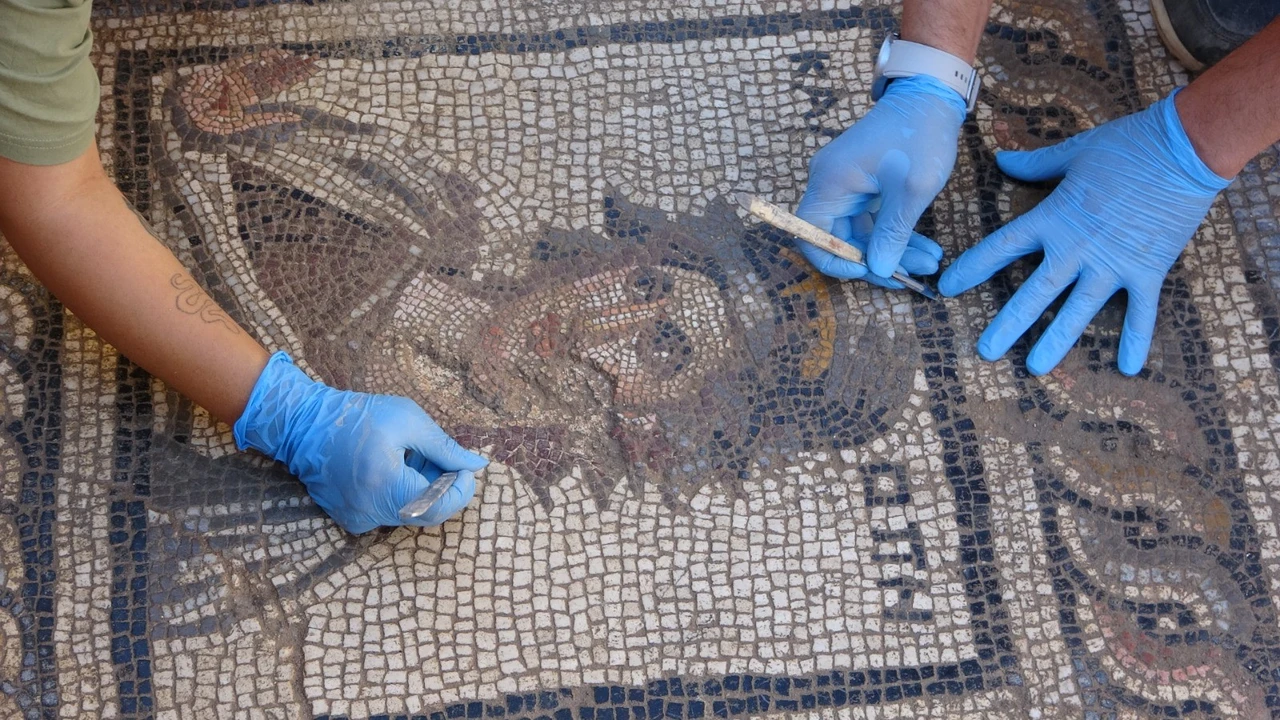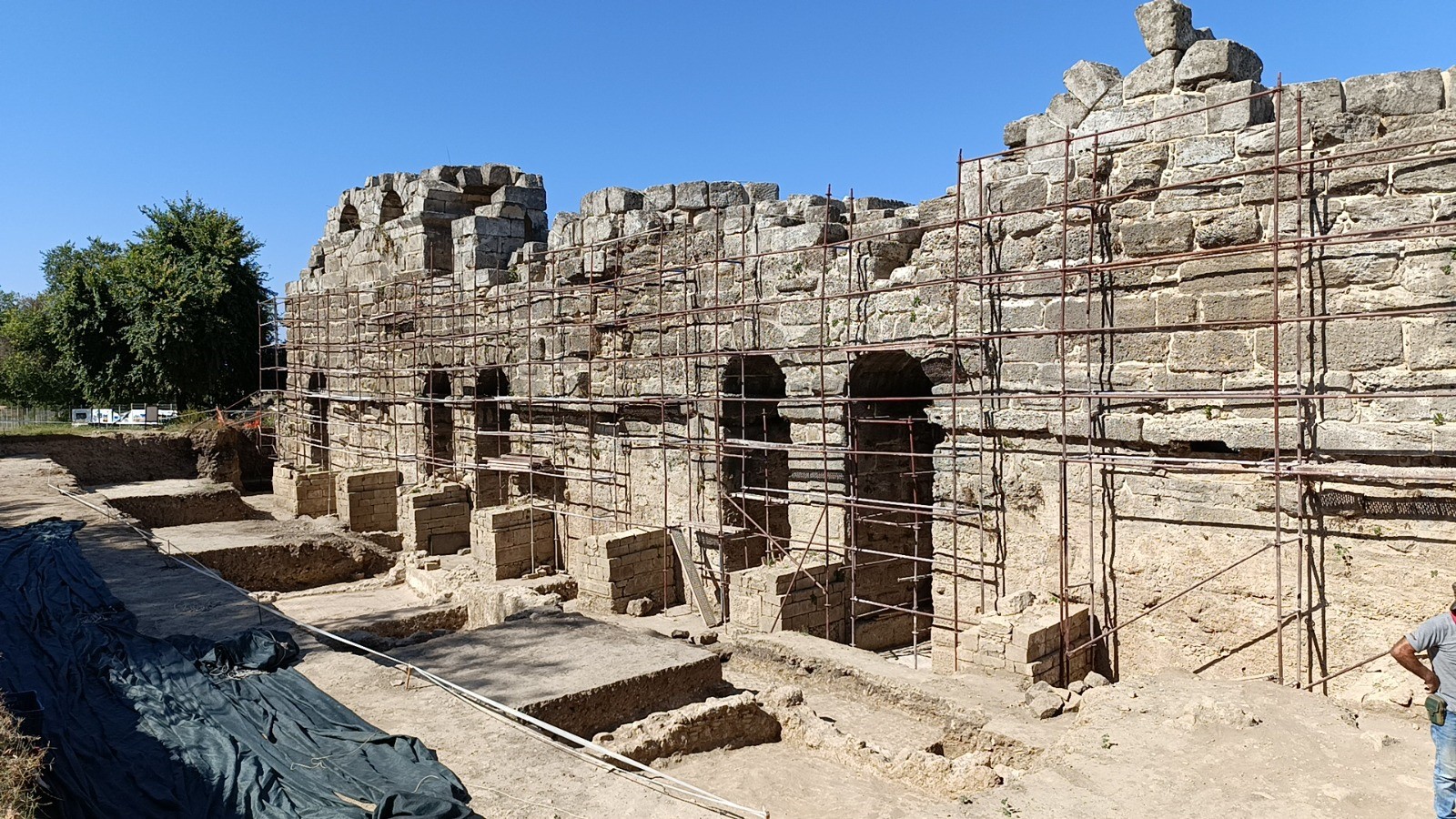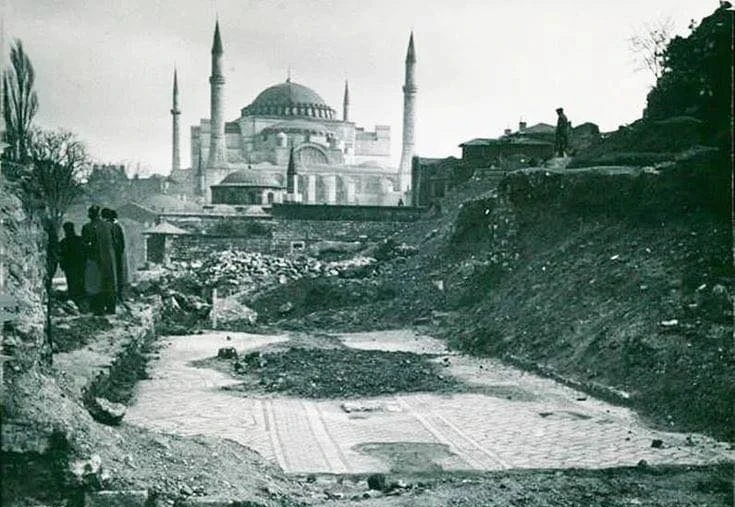Antalya’s ancient city of Side yields remarkable mosaic find
 The mosaic of Calliope in Side, Antalya, Türkiye, July 4, 2024. (AA Photo)
The mosaic of Calliope in Side, Antalya, Türkiye, July 4, 2024. (AA Photo)
Side, an ancient city in Türkiye’s Antalya province, has unveiled a remarkable archaeological find: a second-century B.C. mosaic depicting Calliope, the muse of epic poetry.
This discovery is a result of ongoing excavation and restoration projects in the historic city, known for its rich history and cultural importance.
Turkish Ministry of Culture’s ‘Legacy to the Future’ project

The “Legacy to the Future” project, initiated by the Turkish Ministry of Culture and Tourism in 2023, spearheaded these efforts. The project aims to preserve and restore key historical sites across the country.
Excavations behind the monumental fountain, or Nymphaeum, in Side, led to this significant discovery. Alongside the mosaic, frescoes were also uncovered, showing the artistic richness of the period.
Side was once a prominent port city in the Pamphylia region and has a history dating back to the eighth century B.C. The city’s name comes from the pomegranate in the Luvian language and was ruled by various empires, including the Lydians, Persians, Greeks, Romans and Ottomans.
Continuous invasions led to its abandonment in the 12th century, with residents moving to nearby Antalya.
Discovering Mosaic of Calliope in Side, Antalya

The mosaic of Calliope is particularly notable for its intricate detail and historical value. In Greek mythology, Calliope is the eldest of the nine Muses, goddesses who inspired the arts and sciences.
She is traditionally associated with epic poetry, often depicted with a writing tablet and stylus or a scroll. The mosaic not only shows the artistic skills of the ancient inhabitants but also provides valuable insights into the cultural and historical context of the era.

Professor Feristah Alanyali, head of the excavation project at Anadolu University, expressed excitement about the discovery. “The monumental fountain is a key architectural feature, showing the city’s grandeur. The restoration of this structure and the mosaic’s discovery emphasizes Side’s historical and cultural importance,” she stated.
The findings include significant architectural elements like water arches, expanding the knowledge about the ancient city’s infrastructure and daily life.
The Turkish Ministry of Culture and Tourism announced the discovery via social media, drawing global attention from historians and archaeologists.
As excavations continue, the team remains optimistic about uncovering further artifacts that reveal more about Side’s past.



